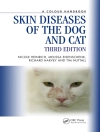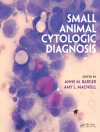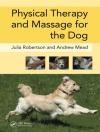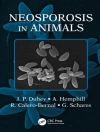The seminal reference on the care of laboratory and captive
animals, The UFAW Handbook on the Care and Management of
Laboratory and Other Research Animals is a must-have for anyone
working in this field. The UFAW Handbook has been the
definitive text since 1947. Written for an international audience,
it contains contributions from experts from around the world.
The book focuses on best practice principles throughout, providing
comprehensive coverage, with all chapters being peer reviewed by
anonymous referees. As well as addressing the husbandry of
laboratory animals, the content is also of great value to zoos and
aquaria.
Changes for the eighth edition:
* Revised and updated to reflect developments since publication
of the previous edition.
* New chapters on areas of growing concern, including: the 3Rs;
phenotyping; statistics and experimental design; welfare
assessment; legislation; training of people caring for lab animals;
and euthanasia.
* All material combined into one volume for ease of
reference.
This book is published on behalf of UFAW (The Universities
Federation for Animal Welfare), with whom we also publish the
UFAW/Wiley-Blackwell Animal Welfare Book Series. This major
series of books provides an authoritative source of
information on worldwide developments, current thinking and best
practice in the field of animal welfare science and technology. For
details of all of the titles in the series see href=’http://www.wiley.com/go/ufaw’>www.wiley.com/go/ufaw.
Jadual kandungan
Part 1: General Principles.
The 3Rs; Statistics and Experimental Design; Genetics and Standardisation of Laboratory Animals; Welfare Assessment; Issues Concerning Field Studies; Animal House Design; Life Support Systems for Aquatic Animals; Human Health and Safety Issues; Transporting Animals; Production and Breeding of Animals; Nutrition and feeding; Human Training; Special Housing Arrangements; Environmental enrichment; Animal Training; Euthanasia/Disposal/Fate After Use.
Part 2: Species Kept in the Laboratory.
Mammals: The Laboratory Opossum (monodelphis domestica); Australian Marsupials; Tree shrews; Bats. Rodentia: Introduction to Rodents; Wild Rats and Mice; the Laboratory Mouse; the Laboratory Rat; Voles; the Laboratory Gerbil; Hamsters; the Guinea-pig. Lagomorpha: The European Wild Rabbit; the Laboratory Rabbit. Carnivora: The Ferret; the Dog; the Domestic Cat. Ungulates: Pigs and Minipigs; Sheep and Goats; Cattle; the Horse. Non-human primates: Introduction to Primates; Prosimians; Marmosets and Tamarins; Owl monkeys; Squirrel monkeys; Capuchin monkeys; Old world monkeys; Breeding Macaques in source countries; Chimpanzees. Vertebrates: Introduction to Fish; Freshwater Fish; Marine Fish; Amphibians; Aquatic Reptiles European Wild Birds; the Domestic Fowl; the Japanese Quail; Doves and Pigeons; the Zebra Finch. Reptiles: Terrestrial Reptiles (Lizards, Snakes and Tortoises); Invertebrates: Cephalopods; Decapod Crustaceans;.
References; Index
Mengenai Pengarang
Robert Hubrecht BSc Ph D CBiol FIBiol is Deputy Scientific
Director of the Universities Federation for Animal Welfare (UFAW).
James Kirkwood BVSc Ph D CBiol FIBiol MRCVS is Chief
Executive and Scientific Director of UFAW.
UFAW is an internationally recognised, independent, scientific
and educational animal welfare charity concerned with improving
knowledge and understanding of animals’ needs in order to
promote high standards of welfare for farm, companion, laboratory,
captive wild animals and those with which we interact in the
wild.












